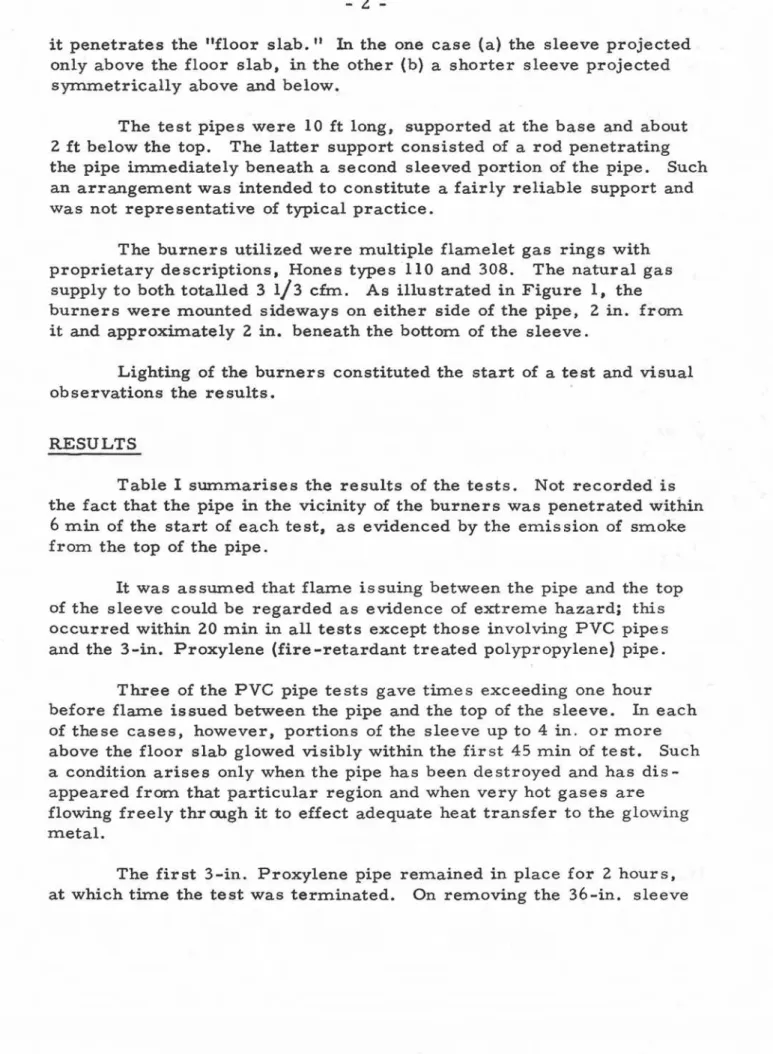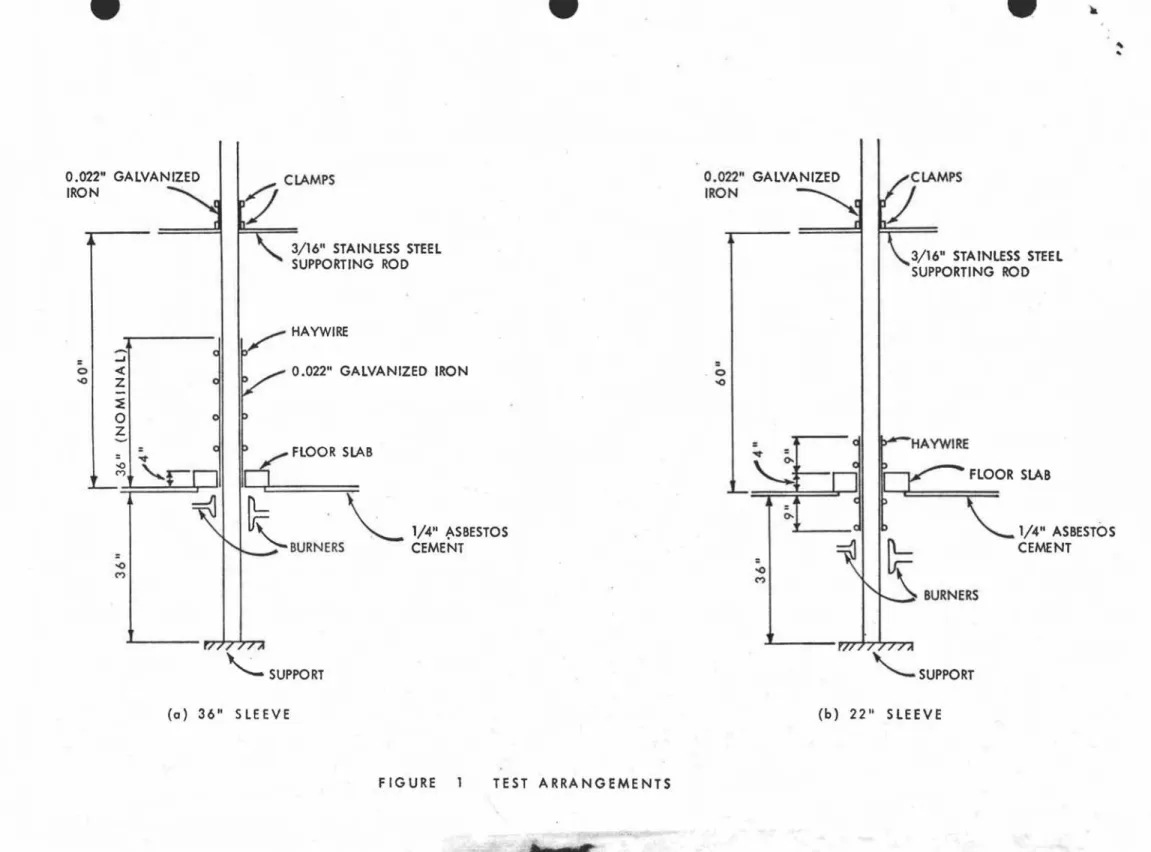Publisher’s version / Version de l'éditeur:
Technical Note (National Research Council of Canada. Division of Building Research), 1972-04-01
READ THESE TERMS AND CONDITIONS CAREFULLY BEFORE USING THIS WEBSITE. https://nrc-publications.canada.ca/eng/copyright
Vous avez des questions? Nous pouvons vous aider. Pour communiquer directement avec un auteur, consultez la première page de la revue dans laquelle son article a été publié afin de trouver ses coordonnées. Si vous n’arrivez pas à les repérer, communiquez avec nous à PublicationsArchive-ArchivesPublications@nrc-cnrc.gc.ca.
Questions? Contact the NRC Publications Archive team at
PublicationsArchive-ArchivesPublications@nrc-cnrc.gc.ca. If you wish to email the authors directly, please see the first page of the publication for their contact information.
NRC Publications Archive
Archives des publications du CNRC
For the publisher’s version, please access the DOI link below./ Pour consulter la version de l’éditeur, utilisez le lien DOI ci-dessous.
https://doi.org/10.4224/20359208
Access and use of this website and the material on it are subject to the Terms and Conditions set forth at
Ad Hoc fire tests concerning the penetration of floors by plastic DWV
pipes
McGuire, J. H.; Huot, P.
https://publications-cnrc.canada.ca/fra/droits
L’accès à ce site Web et l’utilisation de son contenu sont assujettis aux conditions présentées dans le site LISEZ CES CONDITIONS ATTENTIVEMENT AVANT D’UTILISER CE SITE WEB.
NRC Publications Record / Notice d'Archives des publications de CNRC: https://nrc-publications.canada.ca/eng/view/object/?id=62782331-35aa-4e21-8a8d-1b8e53de665b https://publications-cnrc.canada.ca/fra/voir/objet/?id=62782331-35aa-4e21-8a8d-1b8e53de665b
No.
DIVISION OF BUILDING RESEARCH
NATIONAL RESEARCH COUNCIL OF CANADA
564
NOTlE
'fE
C
1HIN ][ CAlL
.
','.
,-April 1972 PREPARED BY J. H. McGuire and P. Huot CHECKED BY G.W.S. APPROVED BYN.B.H.
PREPARED FOR CSA MiscelLaneous Fire Tests Sub-Corrunittee
SUBJECT AD HOC FIRE TESTS CONCERNING THE PENETRATION
OF FLOORS BY PLASTIC DWV PIPES
A previous Technical Note, No. 557, (1) reports fire tests of the horizontal penetration of walls by plastic DWV (drain, waste and vent) pipes. A furnace was used that operated at positive pressure and was capable of following the ASTM E1l9 curve. Unfortunately, it could not be conveniently turned on its side to permit the testing, now re-ported, of vertical pipes penetrating floors. Rather than COhstruct a new furnace to carry out this phase of the work, a mock-section of ceiling was set up in the laboratory.
It is desirable to represent a substantial positive pressure differential across the penetrated partition, and adequate pressure differentials were maintained for the pipe/wall tests. This require-ment was not satisfied by the ad hoc conditions established during pipe/floor tests. Thus in the present Note, whilst a test result indic-ating a poor performance can be regarded as valid, the same cannot be said for a test result indicating satisfactory performance.
TEST CONDITIONS
The two test arrangements investigated are illustrated in Figure I and differ only with regard to the sleeving of the pipe where
;
2
-it penetrates the "floor slab." In the one case (a) the sleeve projected only above the floor slab, in the other (b) a shorter sleeve projected synunetrically above and below.
The test pipes were 10 ft long, supported at the base and about 2 ft below the top. The latter support consisted of a rod penetrating the pipe immediately beneath a second sleeved portion of the pipe. Such an arrangement was intended to constitute a fairly reliable support and was not representative of typical practice.
The burners utilized were multiple flame let gas rings with proprietary descriptions, Hones types 110 and 308. The natural gas supply to both totalled 3 1/3 cfm.. As illustrated in Figure 1, the burners were mounted sideways on either side of the pipe, 2 in. from it and approximately 2 in. beneath the bottom of the sleeve.
Lighting of the burners constituted the start of a test and visual observations the results.
RESULTS
Table I summarises the results of the tests. Not recorded is the fact that the pipe in the vicinity of the burners was penetrated within
6 min of the start of each test, as evidenced by the emission of smoke from the top of the pipe.
It was assumed that flame issuing between the pipe and the top of the sleeve could be regarded as evidence of extreme hazard; this occurred within 20 min in all tests except those involving PVC pipes and the 3-in. Proxylene (fire-retardant treated polypropylene) pipe.
Three of the PVC pipe tests gave times exceeding one hour before flame issued between the pipe and the top of the sleeve. In each of these cases, however, portions of the sleeve up to 4 in. or more above the floor slab glowed visibly within the first 45 min bf test. Such a condition arises only when the pipe has been destroyed and has dis-appeared from that particular region and when very hot gases are flowing freely thr cngh it to effect adequate heat transfer to the glowing metal.
The first 3-in. Proxylene pipe remained in place for 2 hours, at which time the test was terminated. On removing the 36-in. sleeve
}
3
-it was found that the top 5 in. of the pipe w-ithiri. the sleeve was intact and that beneath it melting and coalescing had produced a cone that sealed off the pipe. Unfortunately the test result cannot be taken as representative of the behaviour of this pipe, for a repeat test gave flame issuing above the top of the sleeve within 10 min.
DISCUSSION OF RESULTS
None of the pipe assemblies tested gave performances that could be judged satisfactory over a period of an hour. It is difficult to see how the performance of most of the pipes could be improved under the conditions imposed. With PVC pipes, however, the simple expedient of insulating the sleeve is worth investigating as a means of giving satisfactory performance for an hour. Adequate insulation would eliminate the hazard associated with the glowing sleeve, but it might also exacerbate the destruction of the pipe higher up.
REFERENCES
(1) McGuire, J. H. and P. Huot. Fire Tests Concerning the Penetration of Walls by Horizontal Plastic DWV Pipes. National Research Council of Canada, Division of Building Research, Technical Note No. 557, Jan. 1971.
e
e
TABLE I
TEST RESULTS (VERTICAL, THROUGH FLOORS)
•
"'-セ
Test No. Pipe Pipe Sleeve Flcune Is suing
Dicuneter C onfiguration Between Remarks (NRC R.ef) Material
(in. ) (see Fig. 1) Pipe and Sleeve (min)
36 PVC 4 a 67 Sleeve glowing at 26 min
37
"
4 b 47.530 II 3 a 62 Sleeve glowing at 41 min
38 II 3 a 90 Sleeve glowing at 45 min
24 ABS 4 b 8.8 40 II 3 a 20 15 Polyethylene 4 b 8.5 29 type I 3 a 12.7 34 II 3 a 17 22 Polyethylene 4 b 12 33 type III 3 a 7.2 27 Polypropylene 4 b 10.4 31
"
3 a 9.5 26 Proxylene 4 b 6.5 35"
4 a 17.8 32"
3 a-
Terminated at 120 min 41 11 3 a 9.8•
0.022" GALVANIZED IRON 3/16" STAINLESS STEEL SUPPORTING ROD•
0.022" GALVANIZED IRON セ•
3/16" STAINLESS STEel SUPPORTING ROD k '10.
: o -0....
...J 0« Z セo
z
-- I
"'<t セ '-...r-r--III --0 M 0.022" GALVANIZED IRONc:J:
FLOOR SLABセ
.セ
1/4"セsGestos
'-BURNERS CEMENT ' - - SUPPORT o -0 -"'<t ='-=l--r---11l
-0
--0 M 1/4" ASBESTOS CEMENT "-SUPPORT (0) 36" SLEEVEFIGURE TEST ARRANGEMENTS

